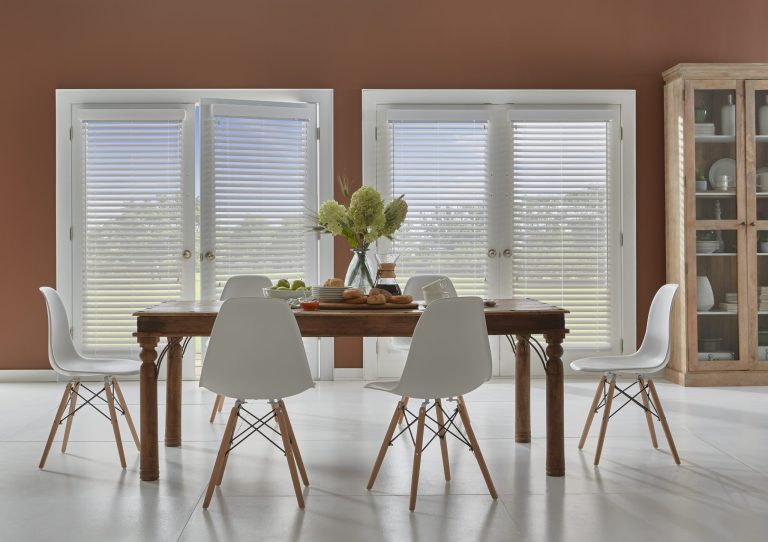
Drapes or Blinds
There are a variety of options available when it comes to window treatments which can make it overwhelming for homeowners to choose the right one for their house. To make this more confusing, many interior decorators often use the terms drapes and blinds interchangeably. In this guide, we’ll explain some basic facts about these two different options so that you can decide what best fits your needs.
Drapes
Drapes are quite similar to curtains, which are fabric panels and often sold in pairs. The main difference between drapes and curtains is that drapes are typically lined with heavy fabric to block sunlight from the outside. They are often long and can reach from the top to the bottom of a window, even bundling up on the floor under the window in some cases. Stiff and heavy fabrics are the standard for draperies, including several materials such as silk, damask or velvet.
While drapes are available in a variety of colors and patterns, they are usually in a solid color and the top of the fabric is typically pleated. Just like curtains, draperies can be hung from hooks, grommets or a rod. They are also available in blackout styles, however they will not insulate as well as blinds. Furthermore, curtains are either closed all the way, or open, you cannot adjust them to let only small amounts of light in.
Cons to Drapes
A down side to drapes is the cleaning process. They can become musty and dust covered with time and cleaning them can be difficult. The recommended method of cleaning is dry cleaning, which means taking them down, taking them to a trusted dry cleaner, and putting them back up, The cost alone can add up quickly.
Blinds
Blinds are quite similar to shades and can be raised up or down with a lifting mechanism or a cord. These are comprised from a variety of materials such as bamboo, wood, vinyl slats or aluminum. They can tilt closed for ensuring privacy or open to allow the light to come in. That’s why it’s rarely necessary to open the whole blind unless you are opening the window behind.
Some blinds come without route holes running down the center for the cords. This allows less light to pass through each slat for added privacy. Since they can block out sunlight very effectively, they are ideal for use in the bedroom. The width and length are also sized to fit in the existing window frame. This can give your windows a clean and finished look. While blinds are commonly available in horizontal slats, there are also models with vertical slats, leaving you with plenty of options for your windows.
Conclusion
Overall, blinds are the better choice for window treatments. With the ability to block out sunlight and heat, they are ideal for ensuring privacy and regulating lighting in your home. There are some differences in the working mechanisms, materials and sizes. So you need to consider all your options carefully before making a final decision. Blinds tilt open at different levels and allow you to control the amount of light coming into your home without your windows being fully exposed. Alternatively, you can pull them open all the way if you want an open sunny window on a nice day. Additionally, blinds have the benefit of different valance types. They can more readily match to the current architecture and decor of your home. Whatever your taste and personal style, you’ll find a blind to harmonize with your house.
Some blogs are written by authorized members of our advertising team for marketing purposes only. Some content may not correctly depict product specifications and may vary depending on product. For more information please call our sales office.
"Great quality and value for money. Installers were on time, finished the install quickly, gave us instructions on how to use. Very satisfied."



















